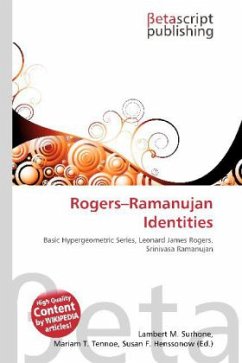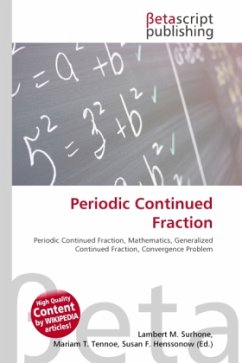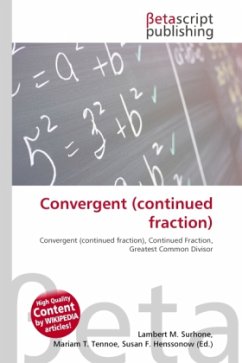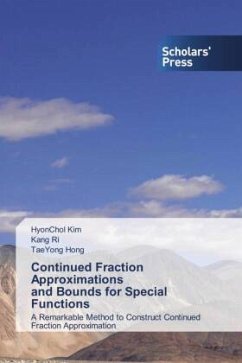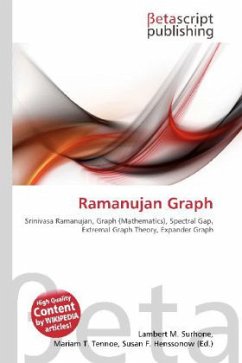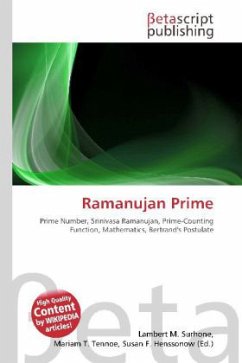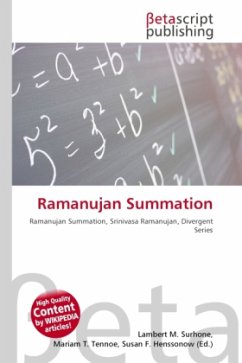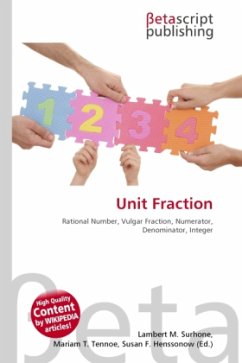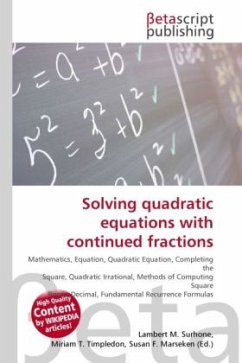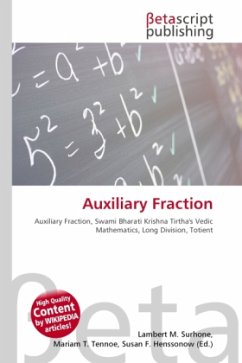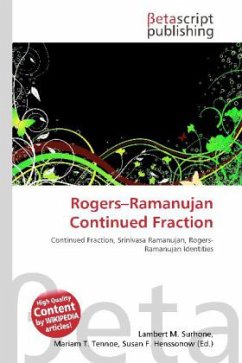
Rogers Ramanujan Continued Fraction
Versandkostenfrei!
Versandfertig in 6-10 Tagen
30,99 €
inkl. MwSt.

PAYBACK Punkte
15 °P sammeln!
Please note that the content of this book primarily consists of articles available from Wikipedia or other free sources online. The Rogers Ramanujan continued fraction is a continued fraction discovered by Rogers (1894) and later studied by Srinivasa Ramanujan, closely related to the Rogers-Ramanujan identities, that can be evaluated explicitly for special values of its argument.If q = e2 i , then q 1/60G(q) and q11/60H(q) and therefore q1/5H(q)/G(q)) are modular functions of . Since they have integral coefficients, the theory of complex multiplication implies that their values for an imaginar...
Please note that the content of this book primarily consists of articles available from Wikipedia or other free sources online. The Rogers Ramanujan continued fraction is a continued fraction discovered by Rogers (1894) and later studied by Srinivasa Ramanujan, closely related to the Rogers-Ramanujan identities, that can be evaluated explicitly for special values of its argument.If q = e2 i , then q 1/60G(q) and q11/60H(q) and therefore q1/5H(q)/G(q)) are modular functions of . Since they have integral coefficients, the theory of complex multiplication implies that their values for an imaginary quadratic irrational are algebraic numbers that can be evaluated explicitly. In particular Ramanujan''s continued fraction can be evaluated for these values of .



